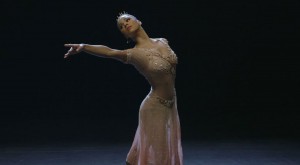A Ballerina’s Tale
Posted on October 14, 2015 at 5:32 pm
B| Lowest Recommended Age: | Middle School |
| MPAA Rating: | Not rated |
| Profanity: | None |
| Alcohol/ Drugs: | None |
| Violence/ Scariness: | Injury and recovery |
| Diversity Issues: | A theme of the movie |
| Date Released to Theaters: | October 16, 2015 |

“A Ballerina’s Tale” — the title suggests a fairy story, with sugar plums and a happily ever after ending. But this documentary about Misty Copeland is a story about the brutal hard work and resolve necessary to create those exquisitely graceful performances and make them look effortless. Like the Venus and Serena documentary about the superstar tennis champions, this is a story of an African-American pioneer in a world that has traditionally been white. While ballet does not offer a competition as definitive as a sporting event, like the Williamses Copeland has a level of ability, skill, and dedication that made it impossible to put her anywhere but front and center.
And, like the Williams sisters, Copeland is in a field where people in their 20’s and 30’s may be at the end of their careers. Furthermore, like the Williams sisters, Copeland faces an unexpected health crisis that put her ability to continue at risk. Just as she was given the chance for her first lead role, Copeland found that she had a severe stress fracture in her lower leg. She was 29 years old, and did not know if she would ever dance again.
This is a good movie about a subject and a person who deserve a great movie. The drama is compelling, although it is hard to see an ad campaign as the triumph it expects us to cheer. The best parts of the movie are Copeland’s performances, starting with home video footage at the beginning, going back to when she was in her teens. Her grace and stage presence are there from the beginning. We see her stand in her favorite spot in the practice room, admitting she is a perfectionist. We learn a little about the relatively recent but still-prevalent notion that a ballet dancer should be waiflike and prepubescent-looking and as indistinguishable as possible from the other dancers. Copeland has a strong, healthy body, curvier than the typical principal dancer. And she is black. The film’s most touching moments are when the previous generation’s African-American dancers become her mentors, and we see in their eyes, faces, and still-graceful gestures how much it means to them that she may be able to go farther than they did. If this is a fairy tale, they are the fairy godmothers.
Parents should know that this film has frank discussions of racial prejudice and an injury with brief graphic images.
Family discussion: What other fields are as demanding as ballet? What did Misty Copeland learn from the women who went before her?
If you like this, try: “First Position,” “Pina,” and “Ballet 422”
